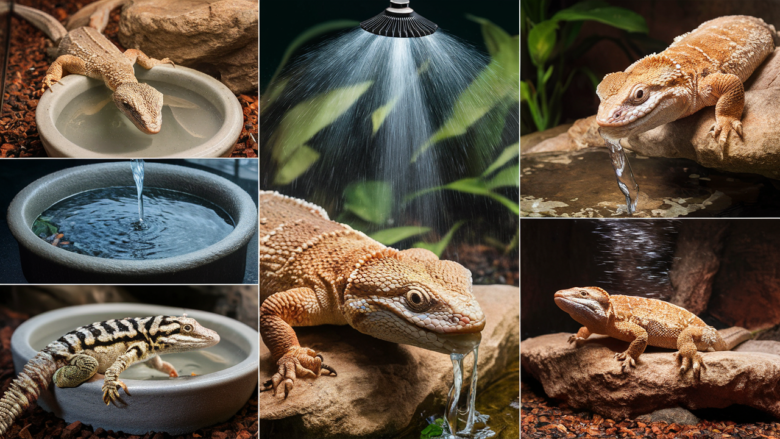Proper hydration is crucial for the health and well-being of reptiles. This article delves into various hydration systems, including misting for tropical species, dripping methods for desert dwellers, and the incorporation of water features in reptile tanks. Understanding these systems can help create a more naturalistic and beneficial habitat for your reptiles.
Understanding Reptile Hydration Needs
Hydration is crucial for reptiles to maintain proper physiological functions. Different species evolve distinct hydration needs based on their habitats. Dehydration can lead to lethargy, organ failure, and even death, underscoring the importance of appropriate hydration. Understanding hygroscopy—the ability to absorb moisture from the environment—further emphasizes the necessity of tailored hydration systems in reptile care, ensuring vitality and longevity in captivity.
Misting Systems for Tropical Reptiles
Misting systems are crucial for tropical reptiles, recreating natural rainfall to elevate humidity levels. Various options, from automated timers to manual sprayers, cater to different needs. For optimal hydration, ensure thorough coverage while preventing water pooling. Regular cleaning is essential to avoid bacterial growth and maintain efficiency.
Dripping Systems for Desert Species
Dripping systems are designed specifically for desert-dwelling reptiles, providing a gentle, controlled method of hydration. As these species are adapted to arid conditions, they often require subtle moisture and water access.
These systems typically feature a reservoir and a controlled drip mechanism that allows water to slowly release over time. By imitating morning dew or occasional rain, dripping systems encourage reptiles’ natural drinking behaviors, prompting them to drink when needed without overwhelming them with excessive moisture.
Setting up a dripping system involves placing a water source above the habitat, allowing water to drip onto rocks or foliage where reptiles can access it. This controlled environment mimics their natural habitat’s sporadic moisture availability. Benefits include reduced waste, enhanced environmental consistency, and decreased stress for the reptiles, making it a preferred method for desert species.
Species like bearded dragons, spiny-tailed iguanas, and various desert tortoises particularly thrive under these conditions, as they are evolutionarily adapted to maximize hydration while minimizing water loss. A well-implemented dripping system promotes hydration without compromising the naturalistic feel of their enclosure.
Incorporating Water Features in Reptile Tanks
Incorporating water features into reptile tanks can significantly enhance habitat quality and provide essential hydration. Features like ponds, streams, or simple water bowls create vibrant environments that mimic natural habitats.
Designing these features requires careful consideration of size, placement, and species-specific needs. A shallow pond may benefit amphibious creatures, while a gently flowing stream can simulate the environment for certain aquatic reptiles. Furthermore, proper filtration and cleanliness must be maintained to ensure safe water conditions, preventing the growth of harmful bacteria.
Many reptiles, such as green iguanas and various anoles, thrive with accessible water features that encourage natural behavior such as soaking or swimming. These enhancements not only promote hydration but also enrich the lives of reptiles by providing exploration opportunities.
Aesthetically, water features elevate the visual appeal of the enclosure, creating a more engaging experience for both reptiles and their owners. Ultimately, integrating thoughtful water features in reptile setups fosters well-being, promotes hydration, and transforms habitats into mini-ecosystems.
Conclusions
In summary, understanding and implementing the right hydration systems is crucial for the health of reptiles. Whether through mist systems for tropical species, dripping techniques for desert dwellers, or water features in tanks, each method offers unique benefits. Tailoring these systems to individual species’ needs ensures a thriving environment and promotes well-being.



